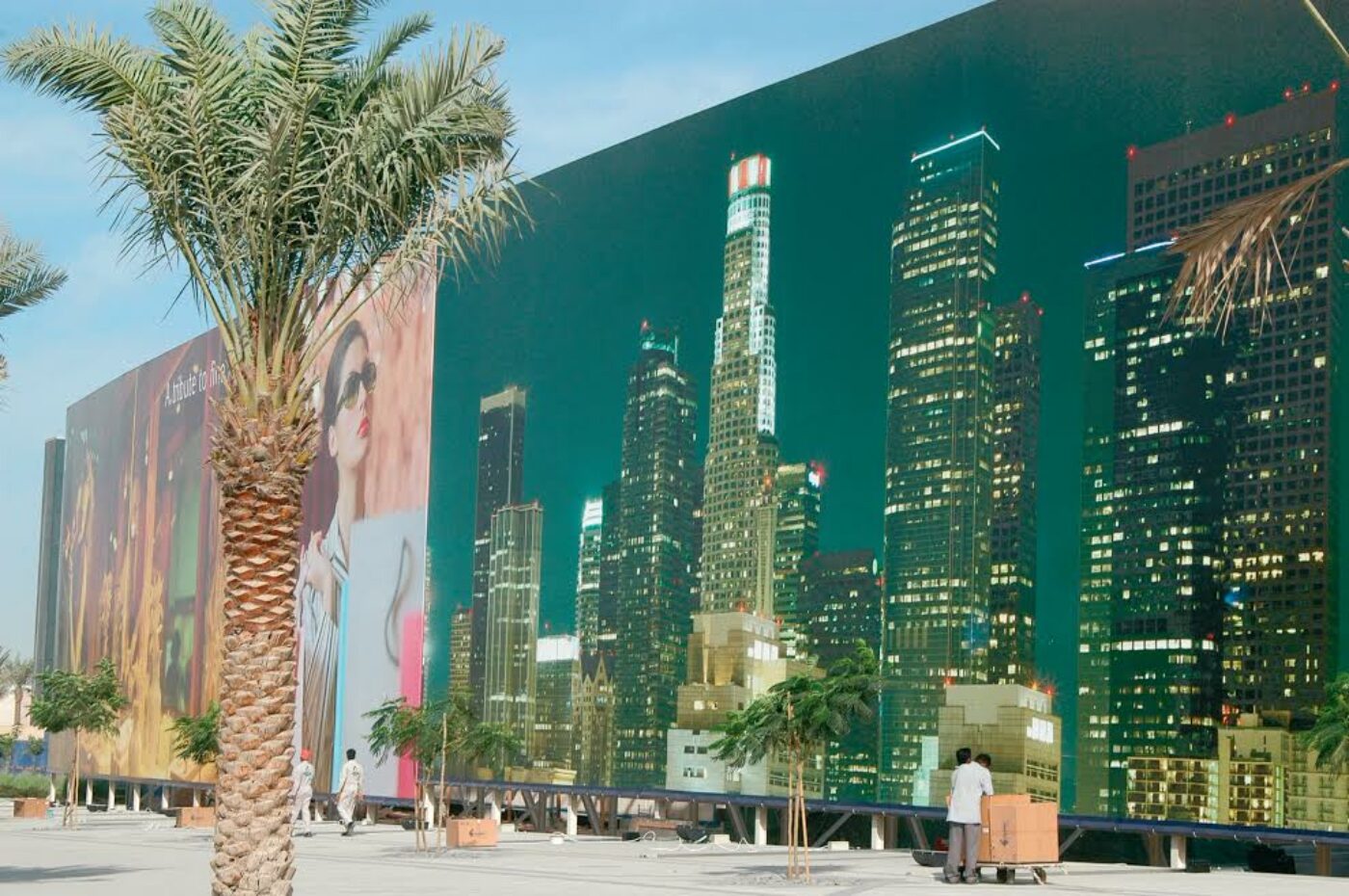Neither Desperate Nor Decadent

Neither Desperate Nor Decadent
Ayesha Al Sager, Afnan Al Rubaian, Sally Khanafer
Neither Desperate Nor Decadent is a reaction to Ole Bouman’s article Desperate Decadence in Volume #6. Bouman met Al Sager, Al Rubaian and Khanafer -three students from Kuwait- while travelling, and invited them to respond to his article.

Born and raised in the Gulf region, we tend to look at the subject of ‘Desperate Decadence’ in a different light. We are more aware and sensitive to the subtitles, differences and changes that occur between the different cities that make up the Gulf. We are more conscious of the process of events and patterns that resulted in the ‘Gulf city’ that ‘Desperate Decadence’ described. The ‘Dubai Effect’ was used as a metaphor to describe the different cities in the region. To us, the ‘Dubai Effect’ exists but not in the manner the article described it to be. The ‘Dubai Effect’ is a metaphor for the accelerated boom these different cities are undergoing, perhaps even more aggressively now than ever before. However, it does not allow us to gain further insight into these individual cities.
A great divide exists within our cities. It is important to note that the city in which we dwell does not follow the common typology of a city. This divide separates the city in half. On one half lies the dream city: a shell devoid of social, cultural and psychological needs and serves the creation of a purely materialistic capital. On the other half lies the human space: a city that is based on people, their daily needs and interactions. It is here that we find our moments: kids playing football in the fields, men walking to the mosque, people making their daily grocery rounds, women gathering for tea at mid-day, charity organizations, daycare centers, schools, big houses, small houses… all that makes every neighborhood – or mini city – complete.
This leads us back to examine the process through which the divided city was established. If we take a trip through time going back some 400 years, we will find the origins of these cities being established. Settlers and nomads moved into previously uninhabited areas to build a city that fulfilled and symbolized all their needs. Over time, they expanded in the manner any normal city would, thereby creating a tightly woven urban fabric. Four centuries later, with the discovery of oil, sudden change occurred. The base on which these cities survived was suddenly shattered. New needs, new necessities, new aspirations emerged. A new set of solutions responsive to these newfound needs had to be formulated. By the 1960s, concrete mass production became the brush that painted the city. With time, commerce, mainly dictated the generation of the city: consequently creating a city whose concern was not that of its inhabitants, but that of its profit. It was the driving force in the creation of the shell. Thus, the divide began to appear. The people however continued to dwell outside the shell within the values of the original city.
The divide’s effect creates a tangible pattern on people’s daily lives. This pattern exists in various degrees in the different cities of the Gulf. For example, within Kuwait City, this divide is obvious in every aspect: psychologically, socially, physically and of course architecturally. In Manama, Bahrain, this divide is somewhat more blurred. In Dubai, U.A.E., this divide does not seem apparent. Does the human space exist? Or is it too weak to be? Upon closer inspection the human space begins to surface in small pockets. It is however so small in scale that the shell – the projected image of the city – completely overshadows it.
Using the analogy of the inflight magazine, whose blurbs are usually trivial, so is the way in which the Gulf cities are usually looked upon. Dubai is represented by a palm tree tattooed in the middle of the sea. Yet, is this really the image of the city? This is as absurd as suggesting that the Statue of Liberty is the city of New York. So where then is the city?
The city is the human space, hidden behind the shell. Then the ‘shell’ is no more than a mask we chose to wear. By wearing it, we are seen as ‘oblivious’ to the world around us. It makes us look like we are reliving a new age of ‘decadence’. However, it is the world that put us on a course that led us to wear a mask. The waves of globalization came in full force and engulfed us. To adapt into a world that is constantly changing beneath our feet, we created a dream city, a ‘shell.’ This shell distorts the human space behind it. A city then can no longer be judged by its postcard imagery.
 This article is part of Volume #6, ‘Architecture of Power, part II: Power Building’.
This article is part of Volume #6, ‘Architecture of Power, part II: Power Building’.